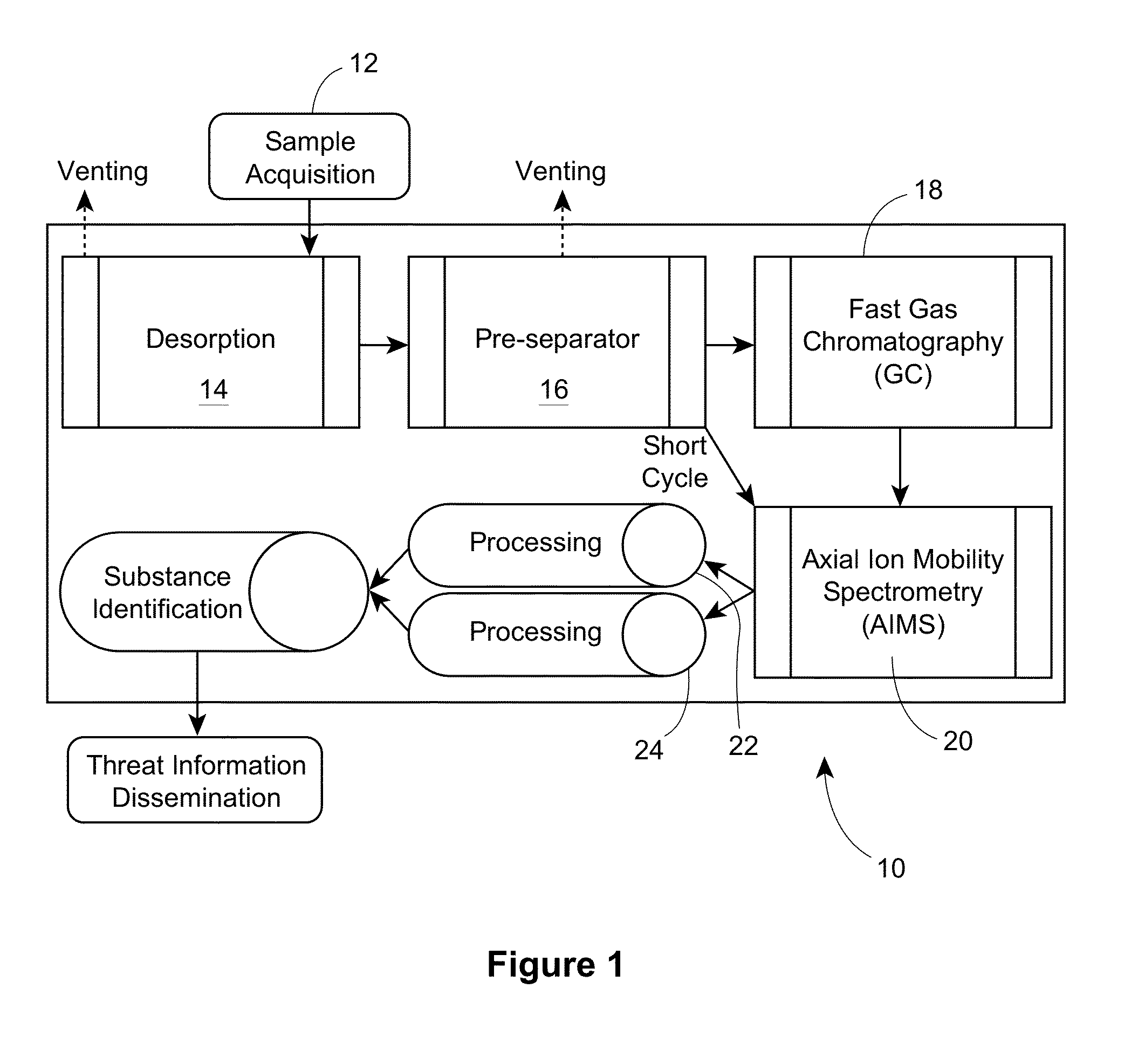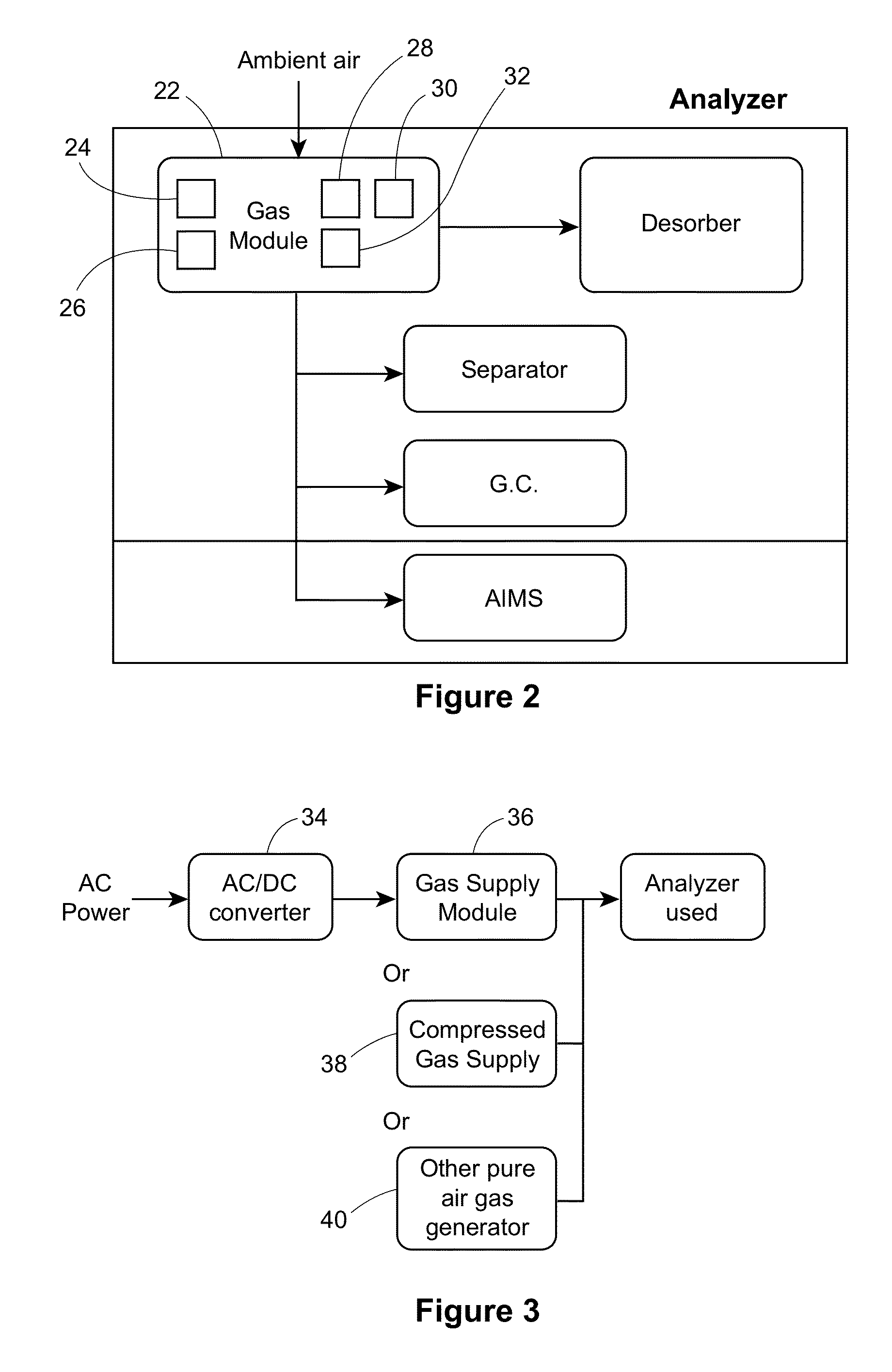Substances detection system and method
a detection system and substance technology, applied in the field of substances detection, can solve the problems of reducing affecting the detection efficiency of substances, so as to improve the detection efficiency, reduce the cost, and simplify the assembly
- Summary
- Abstract
- Description
- Claims
- Application Information
AI Technical Summary
Benefits of technology
Problems solved by technology
Method used
Image
Examples
Embodiment Construction
[0058]Referring now to FIG. 1, a schematic representation of the preferred analyser system 10, according to an aspect of the invention, is shown. The sample 12 is acquired through interfacing with desorber 14. Desorber 14 communicates with pre-separator 16, which communicates both with GC 18, and AIMS 20. Processing means 22 and 24 are in communication with AIMS 20, and the outputs of means 22, 24 are used to identify substances of interest, after which identification information is disseminated. In the preferred embodiment, a carrier gas (discussed below) carries the sample from the desorber 14, to the pre-separator 16, the GC 18 and the AIMS 20.
[0059]The sample may, for example, be positioned on a sample collection slide, card or filter disk sized and configured to interface with the desorber 14. Preferably, the desorber 14 includes means for ramping up temperature upon receipt of a sample to evaporate volatile compounds not of interest, thus cleaning the sample. These volatile co...
PUM
| Property | Measurement | Unit |
|---|---|---|
| boiling point | aaaaa | aaaaa |
| ion mobility spectrometer | aaaaa | aaaaa |
| ion mobility | aaaaa | aaaaa |
Abstract
Description
Claims
Application Information
 Login to View More
Login to View More - R&D
- Intellectual Property
- Life Sciences
- Materials
- Tech Scout
- Unparalleled Data Quality
- Higher Quality Content
- 60% Fewer Hallucinations
Browse by: Latest US Patents, China's latest patents, Technical Efficacy Thesaurus, Application Domain, Technology Topic, Popular Technical Reports.
© 2025 PatSnap. All rights reserved.Legal|Privacy policy|Modern Slavery Act Transparency Statement|Sitemap|About US| Contact US: help@patsnap.com



